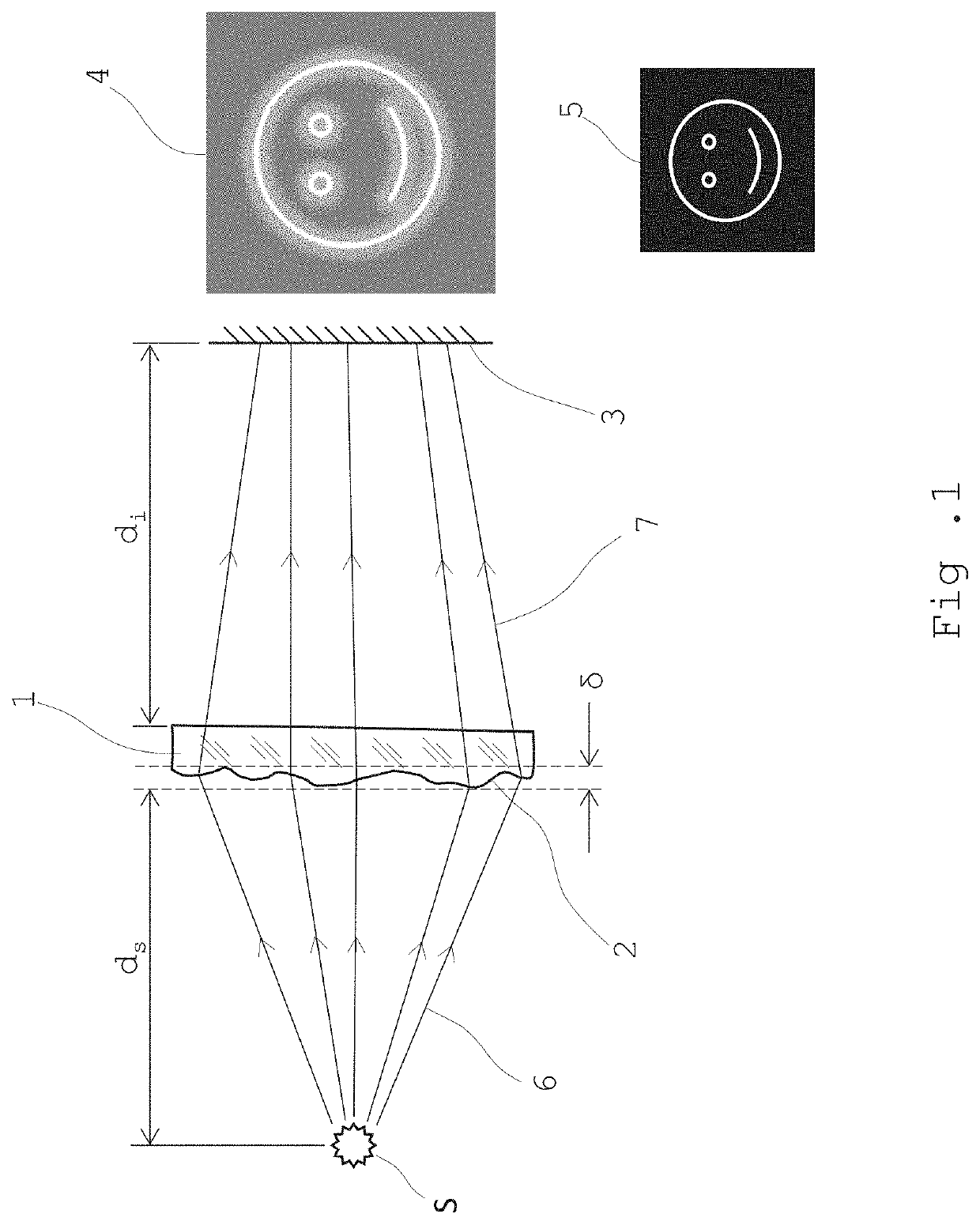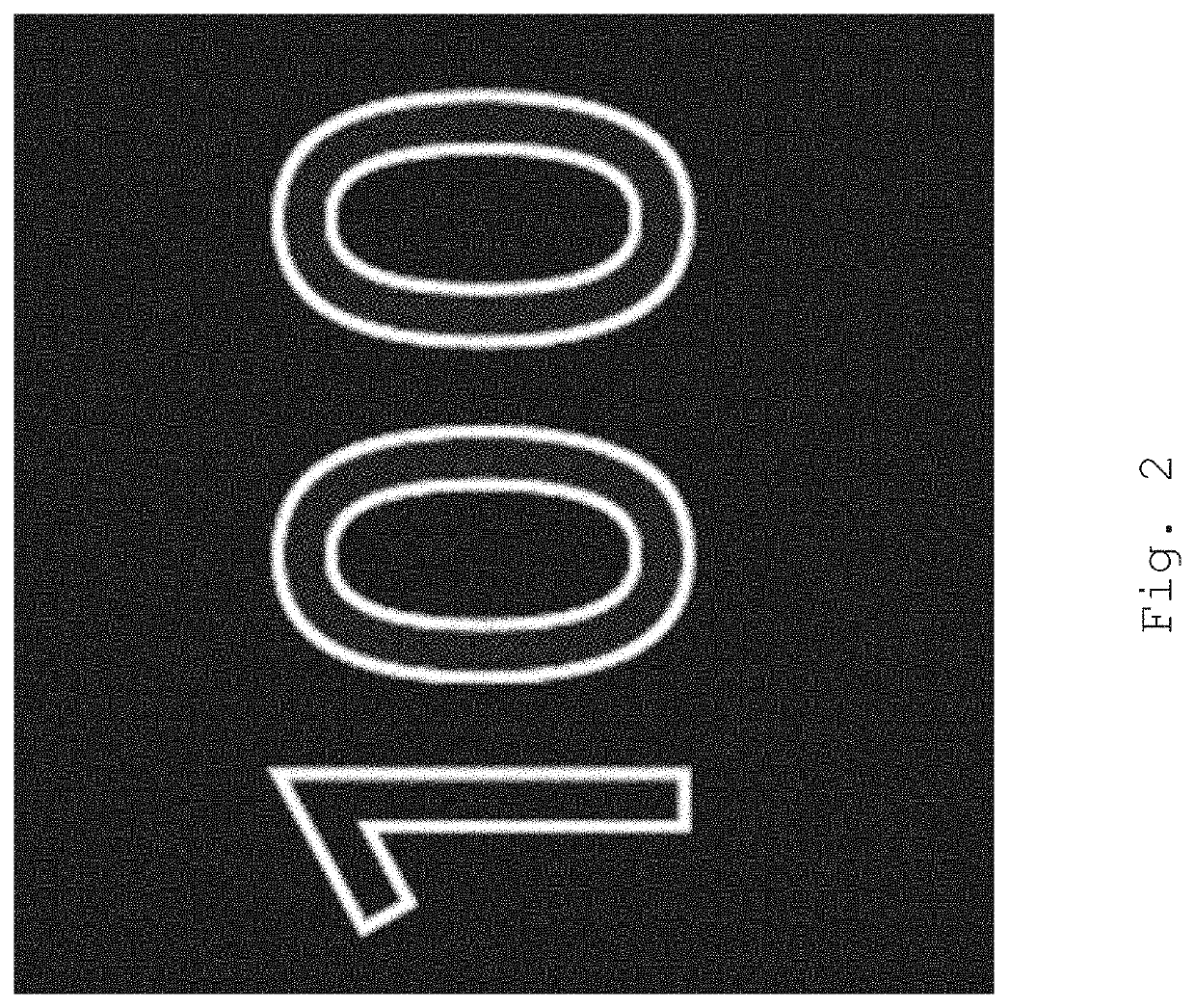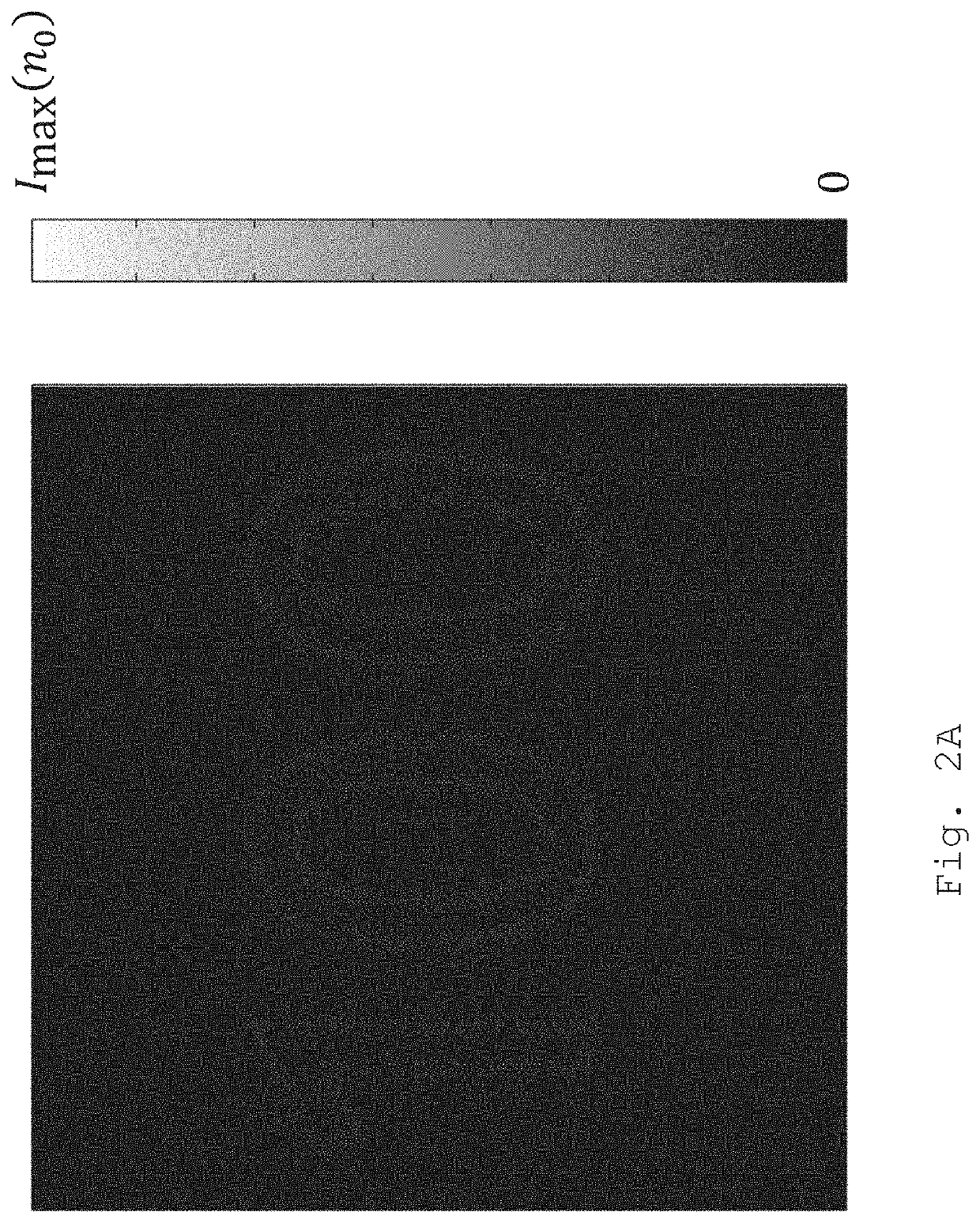Optical security element
- Summary
- Abstract
- Description
- Claims
- Application Information
AI Technical Summary
Benefits of technology
Problems solved by technology
Method used
Image
Examples
Embodiment Construction
[0038]In optics, the term “caustic” refers to an envelope of light rays reflected or refracted by one or more surfaces, at least one of which is curved, as well as to projection of such light rays onto another surface. More specifically, a caustic is the curve or surface tangent to each light ray, defining a boundary of an envelope of rays as a curve of concentrated light. For example, the light pattern formed by sunrays at the bottom of a pool is a caustic “image” or pattern formed by a single light redirecting surface (the wavy air-water interface), whereas light passing through the curved surface of a water glass creates a cusp-like pattern on a table which the water glass is resting as it crosses two or more surfaces (e.g. air-glass, glass-water, air-water . . . ) which redirect its path.
[0039]In the following, the most common configuration where the (refractive) optical (security) element is bound by one curved surface and one flat surface will be used as an example, without re...
PUM
 Login to View More
Login to View More Abstract
Description
Claims
Application Information
 Login to View More
Login to View More - R&D
- Intellectual Property
- Life Sciences
- Materials
- Tech Scout
- Unparalleled Data Quality
- Higher Quality Content
- 60% Fewer Hallucinations
Browse by: Latest US Patents, China's latest patents, Technical Efficacy Thesaurus, Application Domain, Technology Topic, Popular Technical Reports.
© 2025 PatSnap. All rights reserved.Legal|Privacy policy|Modern Slavery Act Transparency Statement|Sitemap|About US| Contact US: help@patsnap.com



